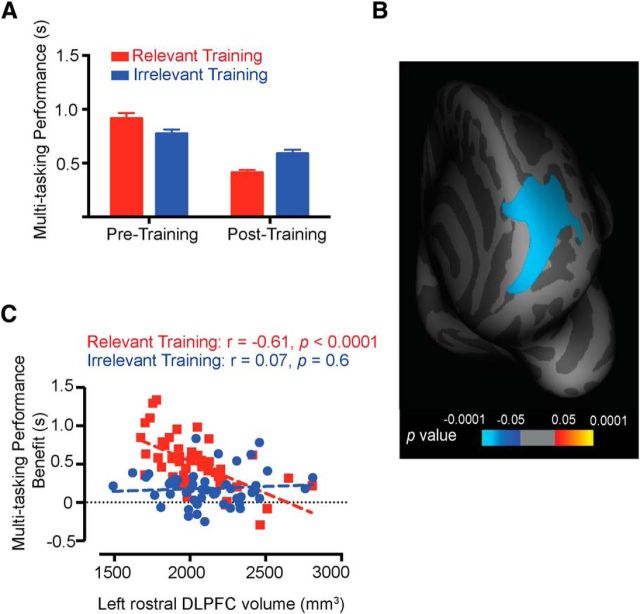Figure 2.
Results. A, Behavioral data. Improvements in multitasking performance from pretraining to posttraining sessions were greater for the relevant training group than for the irrelevant training group (p < 0.0001; error bars represent SEM). B, Whole-brain structural analysis. The cortical surface p maps shows the left rostral DLPFC region for the relevant training group, whose volume (determined from pretraining T1 scans) reliably predicted training-induced multitasking improvements (premultitasking cost minus postmultitasking cost). Clusters were thresholded at p < 0.01 (corrected for multiple comparisons) across all participants in the group. C, Region of interest correlation. The pattern of correlation between the volumes of the significant DLPFC cluster in the two groups and multitasking performance benefit is depicted. Unlike the relevant training group (red symbols), the irrelevant training group (blue symbols) did not show a correlation between behavior and left rostral DLPFC volume.

